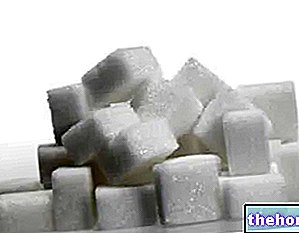What are saturated fats
Chemical Structure
Fatty acids are divided into saturated and unsaturated. These nutrients are formed by a long carbon chain, which begins with a carboxylic group (-COOH), ends with a methyl group (CH3) and has a series of carbon atoms in the central part, each of which is coupled to two atoms of hydrogen.

For each of these three families there are different types of fatty acids, which differ in the number of carbon atoms and arrangement of any double bonds.
Although this is quite common, it is not correct to use the terms "fatty acids" and "fats" as synonyms; the latter, in fact, are made up of a glycerol molecule esterified with three fatty acids and are called triglycerides. Therefore, a triglyceride in which all three fatty acids are saturated is defined as saturated.
Saturated fat and health
Along with excess cholesterol, there is a "positive association between a diet rich in saturated fatty acids and an increased incidence of some cardiovascular diseases, in particular ischemic heart disease and its terrible consequences (angina pectoris, myocardial infarction and stroke). On the other hand" there are many data that underline the protective effect, against the aforementioned pathologies, covered by monounsaturated fatty acids (such as oleic acid contained in olive oil) and polyunsaturated ones (in particular omega-three, which tend to be deficient in " nutrition of many people, and omega-six, often consumed in excess). On these premises are based the advice for a healthy and correct diet, according to which no more than 10% of daily calories should derive from saturated fatty acids (the latest American guidelines recommend not to exceed 7%). For example, if we take a 2000 KCal diet per day, this should not bring more than 15 - 22 grams. A precise calculation of this quantity is not practical at all; for this, most of the time it is recommended to simply moderate the following foods:
fatty meats, sausages, fried foods of all kinds, butter, lard, margarines and any other hydrogenated fat, whole milk, cream, fatty cheeses, offal, eggs, sausages and foods with a high glycemic index, including cola-type drinks and juices industrial fruit.
preferring:
lean white meats (turkey and skinless chicken), fish, vegetables and fruit (moderating the high glycemic index), raw vegetable oils (such as olive, without exaggerating), fish oils, yogurt (preferably not whole and not sweetened), bread, pasta and other complex cereals (choosing wholemeal ones on one or two occasions a day).
No absolute deprivation or mortification of food pleasure, therefore, but a logic of healthy moderation of all foods rich in saturated fats.
The foods we eat every day contain varying proportions of unsaturated and saturated fats; the latter are abundant in dairy products (especially in whole milk, butter and cheeses), in meat (in particular in visible fat), in animal fats (lard, lard, etc.), but also in some vegetables, such as " coconut oil, cotton oil, palm oil and chocolate. The latter are widely used in the food industry, especially for the preparation of sweets and baked goods. The saturated / unsaturated fat ratio it is about 2: 1 in cheeses, drops to 0.7: 1 in meats and around 0.1-0.3: 1 in fish and vegetable oils.
High levels of saturated fatty acids in serum are often found in heavy smokers, alcoholics and obese people.
Other articles on "Saturated Fats"
- Saturated fat and health
- Saturated fats in food



-ed-essenziali-(age).jpg)

.jpg)






















